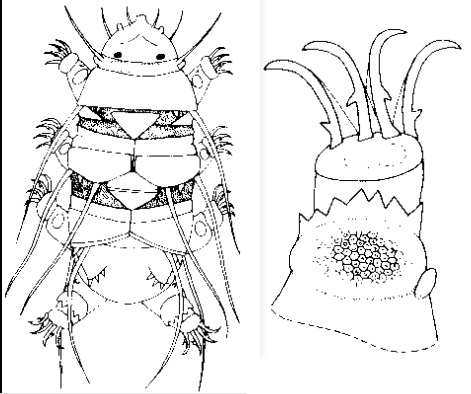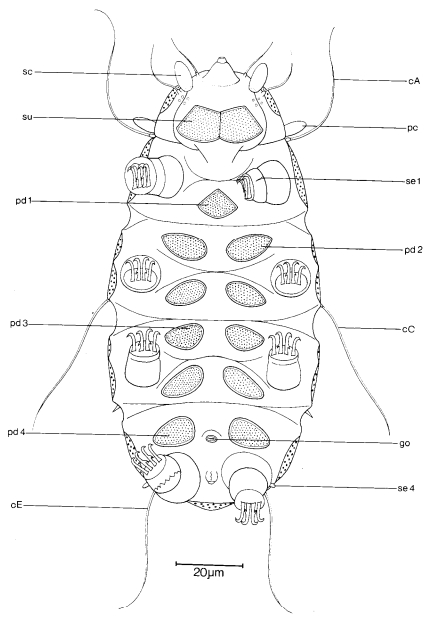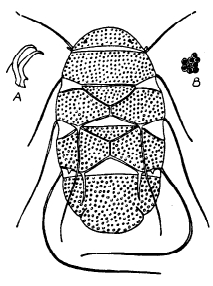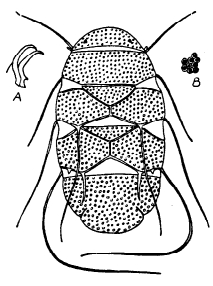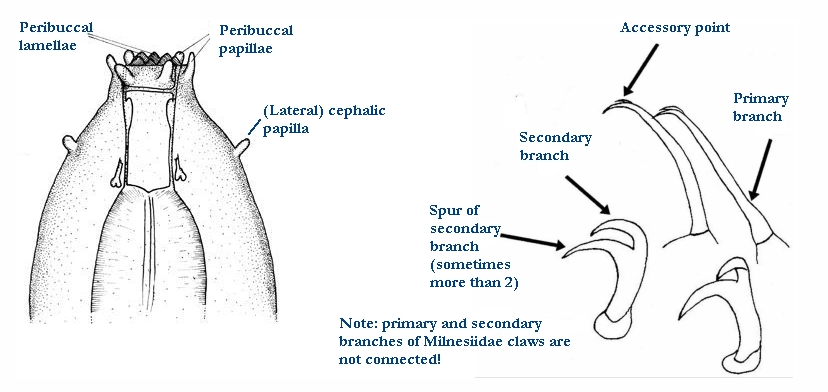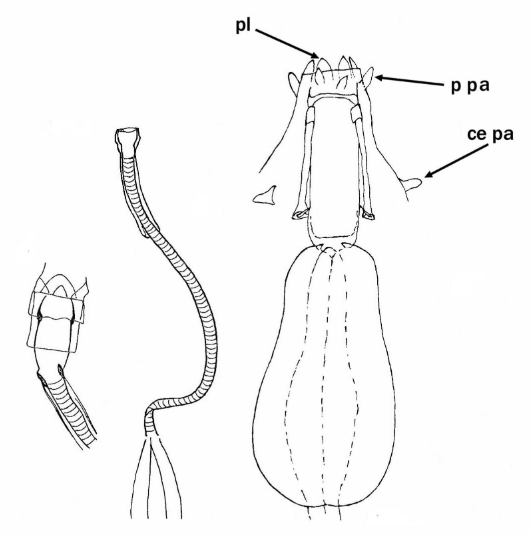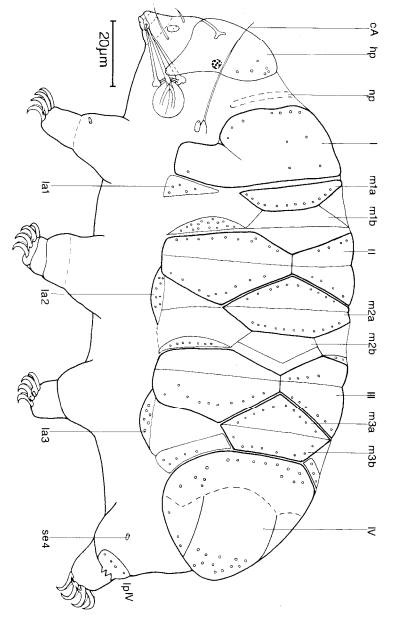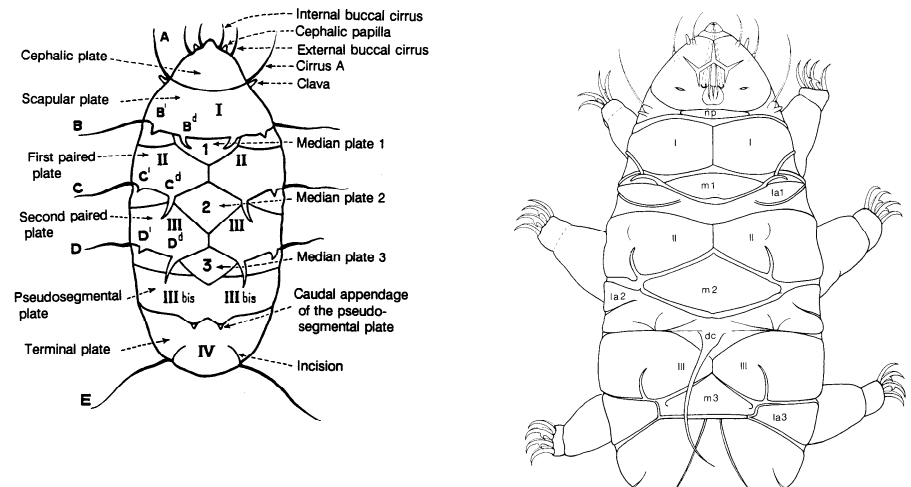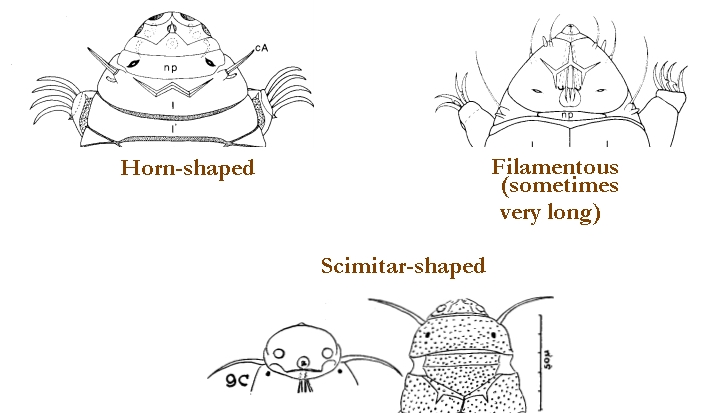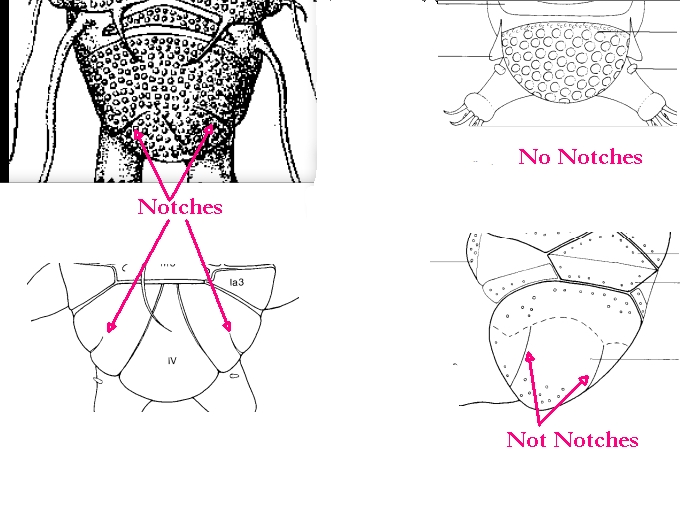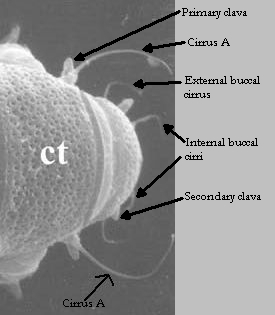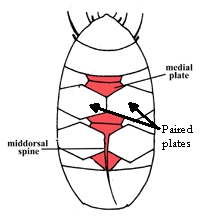From Kristensen 1987: “Echiniscidae with black/brownish or ‘lipoid’ granular eyes; rigid buccal tube, large cuticular stylet supports, seven rows of sculptured ventral plates. Pseudosegmental plates absent. Paired segmental plates II and III with thinner anterior part. Caudal plate IV with a terminal indentation. Median plates 1 and 2 large, plate 3 small and reduced. Colour deep red to orange. Description: The dorsal plates are very strongly sclerotized, the large head plate is often faceted, the neck plate is distinct and has the same sculpture as the segmental plate. Scapular plate (I) is undivided. The anterior part of the paired plates II and III has thinner cuticle than the posterior part, which overlaps the anterior one. The terminal edge of the large caudal plate is strongly incised in connection with cirri E or small spines, when these are present. Median plate 1 is triangular, median plate 2 is divided in two triangular pieces, median plate 3 is small with a finer hexagonal sculpturing than the two first median plates. Lateral intersegmental plates are present between plates I and II. Lateral segmental plates are present in connection with the trunk cirri. In the type species,\ T. spitsbergensis, the sculpture of the dorsal plates consists of large penta- or hexagonal granules surrounding a ring shaped depression with a circular elevation in the middle. The ventral plates consist of rows with finer hexagonal (subcephalic plate) or round granulation. In T. meridionalis, the granulation differs from that found in the spitsbergensis group. The dorsal sculpture consists of irregular or polygonal granules. A pair of ventro-lateral plates may be present on trunk segment III. Cephalic sense organs consist of large primary clavae, cirri A, papillate secondary clavae, internal and external cirri. The cirrophore of cirrus A is very large with a proximal constriction for the insertion of the long flagellum. The cirrophore of the other cephalic cirri are bulbous. The male of T. meridionalis has papillate secondary clavae twice the length of that of the female. Trunk appendages vary from cirri to spines; T. spitsbergensis lacks cirri E, but has one to three small spines in each caudal indentation; T. meridionalis has long cirri E. The other trunk appendages B, C and D vary enormously e.g.: in T. spitsbergensis small spines (Bl, C1 and D1) can be present on the posterior margin of the scapular plate near cirri B, between C and Cd, and between D and Dd. The leg plates have the same sculpture as the dorsal plate, and the leg plate IV always has a large spine fringe. At least the type species T. spitsbergensis has attitudinal leg plates on the inner side of the three first legs. This character could be present in all species in the spitsbergensis-group. All internal claws have secondary spurs, T. spitsbergensis has secondary and often tertiary spurs on the external claws, too. The buccal apparatus has a relatively short and wide rigid buccal tube. Stylet supports large, but without CaCO3, encrustations. Stylet supports are situated at about a 45° angle on the tube, clearly separated from the pharyngeal bulb. The outer cuticular lining, inside the pharyngeal bulb, is thicker than the barshaped placoids. Males are only found in T. meridionalis. They are smaller and more slender than the females, the male is easily to distinguish from the juvenile, because of the former’s very large secondary clavae. Sperms inside the testis are very large with rod-shaped head. The colour of the eyes differ in the different species, T. spitsbergensis always has large black to brown eyes, which consist of 7-8 granulae, T. spinuloides has brown to reddish eyes, which only differ slightly from the Echiniscus type. T. meridionalis has light «lipoid» eyes, and the granula are not found in clusters as in Echiniscus.”
Alberta:
spitsbergensis (Scourfield, 1897) [Echiniscus clavisetosus Mihelcic, 1958; E. marinellae Bartoš, 1935; E. melanophthalmus Bartoš, 1936; E. menzeli Heinis, 1917; E. rosaliae Mihelcic, 1951; E. spinuloides Murray, 1907] (reported as Echiniscus spitsbergensis)
Canada:
laterculus (Schuster, Grigarick & Toftner, 1980)
(spinuloides reported, but now equated with spitsbergensis
North America / Nearctic:
none listed
Other:
macronyx (Richters, 1907)
meridionalis (Murray, 1906)
Citations
Dorsal image from: Ramazzotti G, Maucci W. 1983. Il phylum Tardigrada(III edizione riveduta e aggiornata). English translation by C. W. Beasley, 1995. Memorie dell’ Istituto Italiano di Idrobiologia 41: 1-1012.
Other images from: Kristensen RM. 1987. Generic revision of the Echiniscidae (Heterotardigrada), with a discussion of the origin of the family. pp. 261-335 in Bertolani R (ed). Biology of Tardigrades: Selected symposia and monographs.
